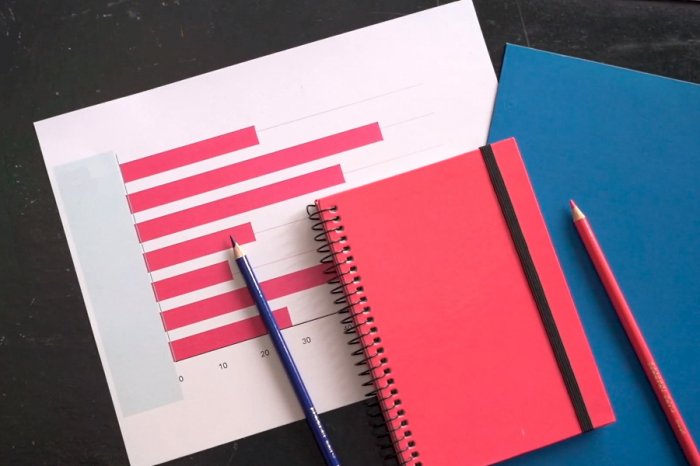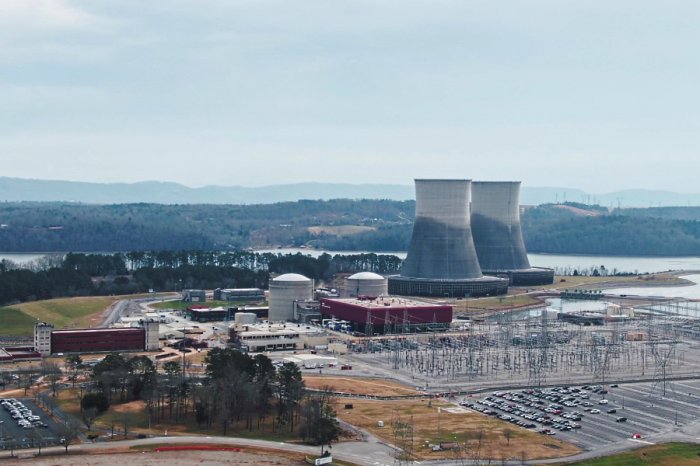After receiving the necessary documents and project presentation, our team will try to review your request as soon as possible, and leading experts will offer the best options for project funding.
As a result, financing the construction of a chemical plant can be a daunting task.
In this article, we will discuss the cost of building a modern chemical industrial facility, the financing options available to large businesses in this area, and some best practices that can be used to keep costs under control.
GCAM Investment Group offers long-term capital to finance chemical plants around the world, including project finance, loans and other instruments of private investment fund.
How much does it cost to build a chemical plant today?
The cost of constructing a chemical plant can vary greatly depending on the size and complexity of the facility.According to a report by the American Chemistry Council, the average cost of building a new chemical plant in the United States is approximately $1.2 billion. However, this figure can vary widely depending on the specific plant being constructed.
Given the diversity of engineering solutions, technological processes and specific chemical products, it is extremely difficult to compare the cost of individual projects in this area.
In general, any of the top 50 largest chemical plants built in recent decades around the world cost customers billions of dollars and even tens of billions of dollars for each. If we are talking about medium-sized facilities, then the costs of investors usually amount to hundreds of millions of dollars.
Some of the factors that can impact the cost of building a chemical plant include:
• Location. The cost of construction can vary depending on the location of the plant. Factors such as land cost, logistics, labor costs, environmental protection measures and regulatory requirements can all impact the total cost of the investment project.
• Size and complexity. The scale and technical complexity of a chemical industrial facility can also impact the cost of the project. Large and sophisticated plants require much more resources and time to complete, which can drive up costs.
• Technology. The specific technology used in the chemical plant can also impact the cost of construction. Newer and more advanced technologies can be more expensive to implement, but they can also provide significant savings and other benefits in the long run.
Vivid examples of a technological factor that affects the final cost of investment projects include energy-saving lighting, economical burners, smart sensors and remote monitoring systems for production processes.
These technologies, widely implemented in modern enterprises, provide customers with a lot of benefits in the medium and long term, although they increase the cost of projects in some cases by 30-50% compared to the old approaches.
Since the construction of any chemical plant involves numerous maniual installation and adjustment operations, the cost of the project depends to a large extent on the cost of labor in a particular region. For this reason, the construction of large facilities in countries such as the USA, Canada or Germany can be more expensive than in developing countries such as India or Turkey.
This also applies to operating costs.
On the other hand, developing countries as a construction site may be severely limited by access to qualified personnel and appropriate technology.
Financing chemical plant construction
Financing the construction of a chemical plant can be a complex process.Such capital-intensive projects usually require long-term debt financing, including syndicated loans, loans issued by large private investors and other sources of borrowed funds.
There are many different financing options available to businesses, each with its own advantages and disadvantages.
Some of the most common financing options for chemical plant construction include:
• Equity financing. The so-called equity financing involves selling ownership shares in the business to investors. This can be a viable option for businesses that are just starting out or that have limited access to other financing options.
• Debt financing. Debt financing involves borrowing money from lenders. This can include bank loans, private investment loans, bonds, and other instruments. Debt financing can be a good option for companies that have a strong credit rating and a clear plan for repayment.
• Government financing. There are a variety of government financing programs available to businesses that are building new chemical plants. These programs can provide low-interest loans, tax credits, and other forms of financial support.
Also of note is project finance (PF), which allows companies to raise large capital against future cash flows expected from large investment projects. Project finance can be useful for chemical plant construction because it provides a way to finance large-scale infrastructure projects.
The most expensive chemical plants and projects in the world
Chemical technology is constantly evolving to keep pace with business and customer needs, while meeting tight environmental and safety standards.The cost of individual samples of chemical equipment manufactured to order for a particular client can reach tens of millions of dollars. Giant reactors, heat exchangers and agitators, assembled on site from numerous elements, require hundreds and thousands of skilled workers from different fields.
A modern chemical plant is always a serious engineering, logistical, commercial and financial challenge for the companies participating in the project.
Below you can find a list of of the most expensive chemical plants (projects) in the world and their brief business descriptions:
1. Sadara Chemical Complex, Saudi Arabia
The Sadara Chemical Complex is a successful joint venture between Saudi Aramco and Dow Chemical. The plant located in Jubail Industrial City II produces a wide range of commercially attractive chemicals, including polyethylene, polyolefin elastomers (POE), and glycol ethers. The cost of the plant was estimated to be around $20 billion. In this impressive project price tag, $12 billion comes from engineering, procurement, and construction work.2. Formosa Plastics in Texas, USA
Formosa Plastics is one of the largest producers of polyvinyl chloride (PVC). Formosa Plastics Corporation's Point Comfort, Texas Expansion costs around $9.4 billion to construct. The giant plant enables the production of HDPE, LDPE, polyethylene, olefins and a range of other critical chemicals for the polymer industry.
3. ExxonMobil Chemical Baytown Complex, USA
As one of the largest polymer producers, this industrial complex in Texas annually produces about 3.8 million tons of ethylene, 700 thousand tons of polypropylene, 600 thousand tons of paraxylene and a number of other chemicals. The complex consists of a giant oil refinery, a chemical facility and an olefins plant. The total investment cost of this complex exceeds $6 billion.4. Dow Chemical in Freeport, Texas, USA
Dow Chemical is a major chemical manufacturer that produces a wide range of products, including plastics, chemicals, and agricultural products. The huge chemical industrial complex in Freeport, fully commissioned in 2017, is designed to produce 1.5 million tons of ethylene and approximately 750 thousand tons of propylene annually. Initially, the construction required $4 billion.5. SABIC in Yanbu, Saudi Arabia
SABIC industrial network in Saudi Arabia consists of 18 affiliates, most of which are located in industrial areas on the coast of the Persian Gulf. The SABIC plant in Yanbu produces a range of chemicals, including ethylene, propylene, and polyethylene. The cost of the plant was $4 billion.6. Sasol in Louisiana, USA
Sasol produces a range of widely used chemicals, including ethylene and propylene. In 2015, the volume of investments in the construction of the plant was estimated at 11 to 14 billion dollars. In total, Sasol then planned to invest about $21 billion in the Louisiana site.

7. Tengizchevroil chemical project in Kazakhstan
Tengizchevroil is the largest oil producing and refining company in Kazakhstan. It produces a wide range of chemicals, including oil, natural gas, and sulfur. In 2016, the cost of the third generation chemical plant at the Tengiz field, which is being developed by Tengizchevroil in the Atyrau region, was estimated at $36.8 billion.8. Shell Chemicals in Pennsylvania, USA
Shell Chemicals produces ethylene, propylene, polyethylene and a number of other products. Shell Chemical's $6 billion petrochemical complex in Pennsylvania was commissioned in 2022.9. INEOS in Louisiana, USA
INEOS produces a range of chemicals, including ethylene and propylene. In 2019, INEOS signed an agreement with Saudi Aramco and Total to build its first factories in the Middle East. First of all, it was a large petrochemical complex Project Amiral worth $5 billion.10. PTT Global Chemical in Thailand
PTT Global Chemical produces numerous highly demanded chemical products, including olefins and polyolefins. The cost of this giant industrial complex was estimated at $7 billion.11. Chevron Phillips Chemical in Texas, USA
Chevron Phillips Chemical also specializes in oil refining and the production of numerous polymer products for various industries. The company's large plant in Texas was valued at $6 billion.12. Braskem chemical project in Mexico
Braskem is a large Brazilian chemical company and the largest producer of thermoplastics on the continent. Braskem chemical plant in Mexico worth $5.2 billion has been launched to produce a wide range of polymers widely demanded by the growing local market.These are some of the most expensive chemical plants in the world that drive growth in the chemical industry. In order to understand the elements that make up the cost of building a plant, below we describe the most expensive equipment that is used in large-scale chemical production.
The most expensive equipment in the chemical industry
Chemical plants require a wide range of sophisticated equipment in order to produce high quality and competitive chemicals, and the cost of this equipment can vary greatly depending on the size and complexity of the facility.
Here are some of the most expensive equipment commonly used in modern chemical plants:
1. Reactors
Chemical reactors are used to contain and control chemical reactions requiring special conditions. The cost of reactors can vary widely depending on their size and complexity, but can range from a few thousand dollars to several tens of millions dollars.2. Distillation columns
Large-sized and technically demanding, distillation columns are used to separate components of a mixture based on their boiling points. The cost of modern distillation columns can range from a few hundred thousand dollars to several million dollars, but non-standard columns for large-scale productions can cost the customer an order of magnitude more.3. Compressors
Compressors in chemical industry are used to compress gases and transfer them to other areas of the plant. The cost of compressors can reach several million dollars. The problem is that large facilities usually need dozens of compressors of various types and capacities.4. Pumps
Pumps are used to move liquids and gases through the plant. The cost of pumps usually range from a few thousand dollars to several hundred thousand dollars. As with air / gas compressors, this type of chemical plant equipment is used almost everywhere.

5. Heat exchangers
Heat exchangers are used to transfer heat from one fluid to another. This equipment is characterized by a huge variety of types, shapes and designs, often requiring individual solutions. The cost of heat exchangers can range from a few thousand dollars to several hundred thousand dollars.6. Storage tanks
Storage tanks are used to store chemicals and other materials. Industrial chemical storage tanks are subject to very stringent safety requirements, as material mismatches or engineering errors can lead to serious consequences. The cost of storage tanks can range from a few thousand dollars to several million dollars, depending on the volume, tank type and materials used.7. Boilers
Boilers are used to generate steam, including high pressure steam, for further use in chemical production. Boilers are hazardous equipment requiring high quality materials and advanced solutions. The cost of boilers can reach several million dollars and in some cases much more.8. Instrumentation and control systems
The so-called group of instrumentation and control systems are used to monitor and control the various processes in the plant. The cost of equipment for measuring and controlling production parameters reaches tens of millions of dollars when it comes to large projects.Chemical plants require a wide range of equipment in order to to ensure high productivity, quality, safety and economic efficiency. The cost of this equipment can vary greatly depending on the size and complexity of the facility. The equipment listed above are some of the most expensive commonly used in chemical plants.
Best practices for construction cost control
Keeping the cost of constructing a chemical plant under control is critical for the success of any business involved in this industry.There are several best practices that can be used to help control costs during the construction process. If you need more detailed information, our financial team can provide you with financial engineering services, indispensable at the early stage of a project.
Some of the best practices for cost control include the following:
• Conducting a thorough feasibility study. Before beginning construction, businesses should conduct a feasibility study to assess the viability of the project. This study should include a detailed analysis of costs, risks, and potential returns of the facility.
• Using a project management tool. Using professional project management tool can help businesses keep track of costs, timelines, and other details during the construction process.
• Hiring a reputable contractor. Hiring a reputable EPC-contractor can help ensure that the construction process runs smoothly and efficiently. A good contractor can also help identify specific areas where construction costs can be significantly reduced.
• Investing in technology. Investing in innovative technologies and advanced engineering solutions can help companies reduce costs over time. For example, implementing process automation can help reduce labor costs and increase efficiency.
Constructing a chemical plant can be a complex and expensive process. However, with the right financing options and best practices for cost control, businesses can successfully build new plants that provide long-term benefits and returns on investment.
By carefully planning the construction process, using the right financing options, and implementing cost-saving measures, businesses can build successful chemical plants that help drive growth and profitability.
Looking for flexible investment loan and professional support?
Contact GCAM Investment Group to find out more.




















